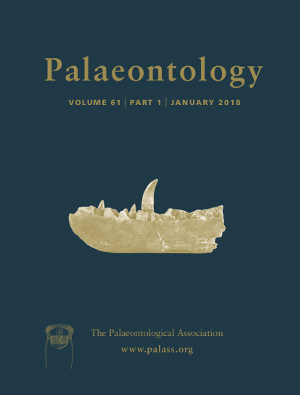Reg. Charity No. 1168330

Fossil abundance and diversity in geological successions are subject to bias arising from shifting depositional and diagenetic environments, resulting in variable rates of fossil accumulation and preservation. In simulations, this bias can be constrained based on sequence‐stratigraphic architecture. Nonetheless, a practical quantitative method of incorporating the contribution of sequence‐stratigraphic architecture in community palaeoecology and diversity analyses derived from individual successions is missing. As a model of faunal turnover affected by the stratigraphic bias, we use the ‘Mulde event’, a postulated mid‐Silurian interval of elevated conodont turnover, which coincides with global eustatic sea‐level changes and which has been based on regionally constrained observations. We test whether conodont turnover is highest at the boundary corresponding to the ‘event’ and post‐‘event’ interval against the alternative that conodont turnover reflects habitat tracking and peaks at facies shifts. Based on the previously documented, parasequence‐level stratigraphic framework of sections in the northern and central part of the Midland Platform, the relative controls of sequence‐stratigraphic architecture, time and depositional environment over conodont distribution are evaluated using permutational multivariate analysis of variance. The depositional environment controls the largest part of variability in conodont assemblage composition, whereas the postulated ‘Mulde event’, or genuine temporal change in conodont diversity, cannot be detected. Depending on the binning of the stratigraphic succession, contrasting diversity and turnover patterns can be produced. The simple approach proposed here, emulating partitioning of β diversity into spatial and temporal components, may help to constrain the stratigraphic bias, even at the scale of an individual section.